|
To touch briefly
on their strengths and weaknesses:
PressureTreated Lumber: Southern Yellow Pine
For most projects PT wood is quite acceptable in a
clear variety(#1). PT wood has a tendency for shrinkage, splitting and
grain raising (all of which can be greatly minimized with proper initial
sealing). The
most bang for your buck will come from PT
wood. It is important to sand and seal PT wood right away and not allow
it to "weather" any large amount of time unprotected. Although PT wood
is rot and decay resistant it is very porous and absorbs water readily,
these cycles of absorbing water and drying out cause the open grain to
raise and will cause splits if left unsealed. Resent changes to the
pressure treating formulas have netted a much nicer looking lumber, now
not so green colored, better grades of PT lumber can be quite attractive
with natural honey colors and grain showing clearly. But for a high end
project where PT just won't do, you must consider other options.

Cedars:
Although cedar and redwood are stable and attractive and contain natural
oils that make them resistant to insects and rot, they may be too soft
for most deck applications, and very pricey to purchase in clear grade
(no knots). Redwood and Cypress are increasingly scarce and expensive,
while Western Red Cedar remains plentiful. Western Red has been used for
siding and roofing as well as decks, and is a very attractive dark
red/brown lumber with a lovely scent as such it is often used in
closet linings. Another cedar, Port Orford cedar (sometimes called
perfume cedar)harvested in the north west is used in outdoor projects,
it
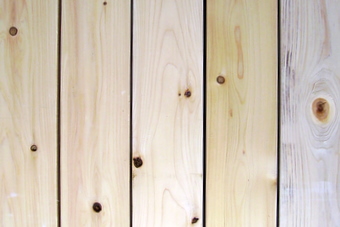 is
harder then western red but not very stable and very light colored. This
aromatic cedar is usually found with many small non stable knots, it is
a difficult to stain and does not weather gracefully, especially the
knots. Sometimes Alaskan Yellow is used for decks with many of the
attributes of Port Orford cedar. is
harder then western red but not very stable and very light colored. This
aromatic cedar is usually found with many small non stable knots, it is
a difficult to stain and does not weather gracefully, especially the
knots. Sometimes Alaskan Yellow is used for decks with many of the
attributes of Port Orford cedar.
Straight grain
fir does not offer much rot and insect resistance and should be consider
only in covered porch applications.
The lesser Mahogany's (Red Meranti
and Cambara) are viable options but are in the same price range as the
denser
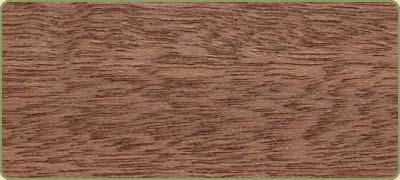 exotics
which will perform better, also the mahogany's have a "speckled" grain
which can fill will dirt and mold/mildew. Meranti the Philippine
mahogany related to luan is much superior to the lower cost Cambara.
Meranti ranges in color and density form the blond unappealing "luan" to
the dark red which is denser and much more attractive. The dark red
Meranti boards do well outdoors, are exotics
which will perform better, also the mahogany's have a "speckled" grain
which can fill will dirt and mold/mildew. Meranti the Philippine
mahogany related to luan is much superior to the lower cost Cambara.
Meranti ranges in color and density form the blond unappealing "luan" to
the dark red which is denser and much more attractive. The dark red
Meranti boards do well outdoors, are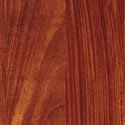 resistant to insects and rot weather to a nice silver patina if left
unsealed, staining or sealing can be problematic as it is difficult to
obtain a long term finish.
resistant to insects and rot weather to a nice silver patina if left
unsealed, staining or sealing can be problematic as it is difficult to
obtain a long term finish.
Santos mahogany is a beautiful
desirable lumber that has become very popular in the interior hard wood
floor marketplace as well as in furniture. Not sure if too many Santos
mahogany decks are going up
Siberian Larch hearing a lot about this wood
now that USSR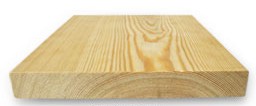 has collapsed. Look a lot like South Yellow Pine but quite a bit denser, with a
tight grain and mostly heartwood, plentiful and sustainable in Russia and can be
very fairly priced. Natural resins and density make it very unappealing to
insects and decaying fungi.
has collapsed. Look a lot like South Yellow Pine but quite a bit denser, with a
tight grain and mostly heartwood, plentiful and sustainable in Russia and can be
very fairly priced. Natural resins and density make it very unappealing to
insects and decaying fungi.
The exotics: Tigerwood, Purple
Heart, Jarrah, Jatoba, Cumaru, Teak and Ipe: Are all very hard and
durable and perform great outdoors! Tigerwood has a similar grain to
Mahogany and may share the same problem, however is a beautiful wood to
look at. Teak is likely priced out of most peoples budget. Jatoba,Jarrah
and Cumaru are all fantastic examples of extreme exotic woods, however
,for the last number of years Ipe is considered the ultimate outdoor
lumber and priced competitively with all the other exotics.
Tigerwood or Goncalo Alves is
an atttractive very figured wood, light golden brown with darker colored streaking similar to koa. Some people
love the look while others find it too busy. Pricing is very good and
the wood is durable, naturally resistant to rot and decay. Getting up
there in the Janka scale it going to start to be tougher to cut, fasten
and shape but not as extreme as Ipe. This is another wood finding a
market in the interior flooring market as well. Again, just be aware at
how busy a large area of this wood can became.
golden brown with darker colored streaking similar to koa. Some people
love the look while others find it too busy. Pricing is very good and
the wood is durable, naturally resistant to rot and decay. Getting up
there in the Janka scale it going to start to be tougher to cut, fasten
and shape but not as extreme as Ipe. This is another wood finding a
market in the interior flooring market as well. Again, just be aware at
how busy a large area of this wood can became.
Purpleheart Purpleheart so named for
its wild purple color which it becomes thru aging and oxidation. The grain is mostly straight
but sometimes irregular wavy or interlocking. Heartwood is very
resistant to termites and fungi. A dense exotic lumber, although the
color is not for everyone. Have not heard as much about availabity
lately.
which it becomes thru aging and oxidation. The grain is mostly straight
but sometimes irregular wavy or interlocking. Heartwood is very
resistant to termites and fungi. A dense exotic lumber, although the
color is not for everyone. Have not heard as much about availabity
lately.
Cumaru is similar in appearance to
Ipe, but with a more interlocking grain which makes it less stable, and
it does not wear as well and looks less attractive, it can sometimes be
confused with a lower grade Ipe and is less costly alternative when
overall quality and look are not as important such as a large boardwalk.
Jatoba Brazilian Cherry is
a beautiful tan/salmon wood that will turn burgundy or deep red with
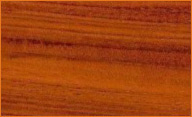 orange
tones after time. Jatoba has an interlocking grain with medium to course
texture. Used extensively for high end interior floors. Jatoba is very
dense and durable but maybe better suited to indoors as is difficult to
season. If not dried or seasoned slowly may be prone to surface
checking, warping and case hardening. Heartwood however,is naturally
resistant to insects and decay. orange
tones after time. Jatoba has an interlocking grain with medium to course
texture. Used extensively for high end interior floors. Jatoba is very
dense and durable but maybe better suited to indoors as is difficult to
season. If not dried or seasoned slowly may be prone to surface
checking, warping and case hardening. Heartwood however,is naturally
resistant to insects and decay.
Jarrah Australian another
exotic lumber. Jarrah is salmon pink to rich reddish brown and fragrant
when fresh, most desirable when it has a straight grain. Old growth has
become severely depleted and new growth is a small percentage of
available stock, this material may be played out in the US market.
Heartwood is highly rot and insect resistant. there is even a wood
preservative said to be from Jarrah oil
Ipe
The ironwoods are inherently clear, not extremely pricey, but very
difficult to work with (Extremely heavy and difficult to cut, screw,
nail, or machine).
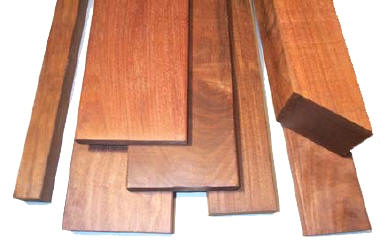 For
the ultimate in durability there is no equal to Ipe (the ironwood). As
its nickname implies the wood is tough as iron. Although very difficult
to work with, nothing lasts as long outdoors. A rich beautiful wood that
ages gracefully to a silver patina if left unfinished For
the ultimate in durability there is no equal to Ipe (the ironwood). As
its nickname implies the wood is tough as iron. Although very difficult
to work with, nothing lasts as long outdoors. A rich beautiful wood that
ages gracefully to a silver patina if left unfinished
|


